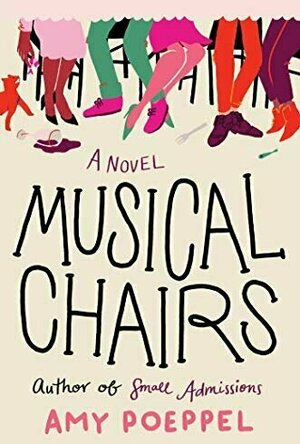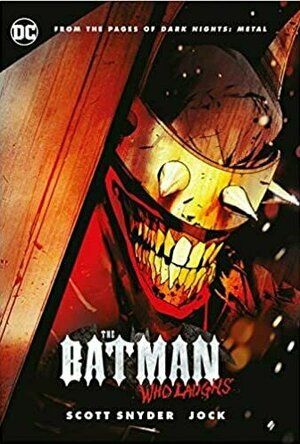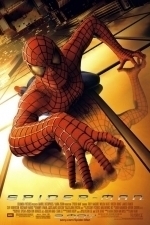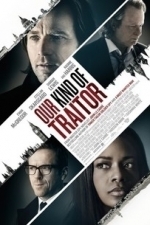Kristy H (1252 KP) rated Musical Chairs in Books
Sep 17, 2020
This is a charming and funny story. If it sounds all over the place, it's only because it's a reflection on Bridget's life, which is a total mess at the beginning of our tale. Each character in Poeppel's heartfelt tome is wonderful: real and true, standing out on the page as their own person. I fell easily for poor Bridget, hapless Will, the twins, and our host of side characters, ranging from Bridget's very New York-ish sister to Gwen to uppity Edward and his assistant to the local Connecticut townfolk who swarm to try to keep Bridget--and her cottage--from falling apart.
There's a lot of focus on music here--with Bridget, Will, and Edward all musicians, and it makes for a different and lovely book. While plenty of serious things happen, overall this is a sweet and funny story. I found myself smiling and laughing often while reading. There are some downright laugh out loud scenes. Bridget's inability to master technology, coupled with the helplessness of her twins, allow for some wonderful moments. But what really shines through is how much everyone here loves each other--Bridget and her kids, the whole Stratton family, and Will, who is truly part of the clan. How nice to read a book where, even if everyone might fight a day, their compassion and caring for each other shines through.
And, of course, I have a soft spot for any book featuring twins, so I enjoyed a prominent storyline featuring them.
Overall, this is delightful book that offered a wonderful distraction to the woes of the world. It's a funny and kind look at family and friendship, and it simply made me happy. 4+ stars.
Joe Goodhart (27 KP) rated The Batman Who Laughs in Books
Nov 30, 2020
I liked it quite a bit! Yes, it probably could easily have been a 5-issue mini, but I don't feel the story suffered by the added length. It allowed for the crazy roller coaster ride that it was to be even crazier, helped to spread just a bit more darkness in Gotham! Oh, and it showed how Alfred truly is the necessary light in Batman/Bruce's life, something B-Man totally needs, far more than Selina (sorry, Tom King, but I don't think the romance between the two works. Jus' sayin' is all!).
I know a lot of folks absolutely <b>abhor</b> DARK NIGHTS: METAL and anything relating to it, including the Batman Who Laughs! Me? I am enjoying it to no great end! It reminds me of some of the best things about the 90's, just turned up to 11! I think it's an interesting concept, bringing some clever creepiness into DC's "Rebirth"! And besides, it is at least something fresh and different (unlike the umpteenth X-deaths/reboots over at Marvel!)!
One aspect of the mini that really drove it all home was the art by Jock. I loved what he did in the WYTCHES (also with Snyder), and here it is just as good, if not better. The use of shadows and angles brings the creepiness all up and about, leaving with you long after the lights have gone out and sleep comes over you!
I already mentioned it, and several others have as well in their reviews, but Alfred was clearly the MVP here! He was totally on board, taking being a butler to a whole new level beyond 100%! I think sometimes he is under-utilized, but here he definitely got some much needed appreciation and respect! Kudos to you, Scott Snyder, for giving Alfred his due!
And lastly, that ending, the last couple panels? Ewwwww... chills!! Now, I can not wait to read Joshua Williamson's BATMAN/SUPERMAN #1! No spoilers, tho', promise!
So, yes, I was super-impressed with THE BATMAN WHO LAUGHS, just as I was with Snyder's DARK NIGHTS: METAL. If you didn't like METAL, then, well, chances are pretty likely you won't like this one!
Emma @ The Movies (1786 KP) rated Spider-Man (2002) in Movies
Sep 25, 2019
It's the classic story, boy meets spider, spider bites boy, boy gets super-human powers.
Okay, so I'll be serious... Awkward high school student Peter Parker gets bitten by a genetically modified spider while out on a school field trip. It isn't adolescence that's changing him though, it's the spider bite, and his new found spider-like abilities come in handy when he decides to fight evil while wearing spandex, after a tragedy hits his family.
Watching Maguire climb a wall is truly cringe-worthy (the effects were terrible). He has this wide-eyed look of insanity. And when he's trying to shoot web intentionally for the first time I half expect a nerdy friend of his to be standing in the background saying "laaaaaame, I knew you were full of shit, Parker."
Spidey learns a harsh lesson about holding grudges after he lets the armed robber go when he gets stiffed for prize money at the arena. Something you also learn in this film, evidently if someone is bleeding you don't need to apply pressure to a serious wound to try and prolong their life while the ambulance gets there.
We learn many important things from this film... best friends can be arseholes. "Oh you like that girl do you, well guess what, I'm going to date her and let you find out by accident."... Oh, and that people running in terror are oblivious to people ripping open their shirts to reveal a Spider-man costume (although the same is true for Superman and Supergirl sometimes too.)... Mary Jane is an idiot, she doesn't recognise her own friend's voice (maybe because he's dressed in spandex and she was distracted) and she doesn't get the hint that "he was in the neighbourhood."... And Willem Dafoe does evil really, really well.
The effects really are terrible, there's no denying that technology has developed a lot since this film was made, but I always find it really awful watching things that are so obviously generated... that hideous artificial looking outline of the green screening. Speaking of green things, Green Goblin's outfit is reminiscent of an over the top Power Ranger villain.
Between the terrible effects and the overacting, I'm honestly not sure what this film was going for. It had too many "funny" bits to be a serious film, and it had too many "serious" bits to be a funny film. I'm left thinking of Batman Forever as a comparison, the only difference being that BF was just over the top enough to be funny.
Darren (1599 KP) rated Our Kind of Traitor (2016) in Movies
Sep 16, 2019
Performances – The performances through the film show us just what Le Carre does with his characters, he gives them good moments, without making them stand out. McGregor is good, but you feel a younger up and comer would have been perfect here, Harris is good and doesn’t put a foot wrong, while Skarsgard enjoys his role, shady but loyal. Damian Lewis brings back his true English role which at times does feel weird knowing how often he has been an American character recently.
Story – The story comes from a John Le Carre novel, so instantly we know we are going to get a thriller that keeps us guessing on what everyone’s motivation will be. The idea that a normal couple get mixed up in the middle of an international information exchange is different and does work for the film because it helps us stay on edge thinking and wondering if they do have a bigger involvement. The story does feel like that one moment to make it great is missing, as everything does end up feeling just normal and good only.
Crime – The crime side of the film follows a criminal looking for a safe way out of the life for his family in exchange for bringing down the mafia’s dealings in London.
Settings – The film splits the settings between London, for the deals, Morocco for the exchanges and the final location for the next chapter of the lives, they work because they show how this world would operate.
Scene of the Movie – The escape.
That Moment That Annoyed Me – It lacks the edge of your seat style of Le Carre novels have given us.
Final Thoughts – This is a solid thriller even if it lacks that final factor to make it one of the best ones, it does the by the book material well, but never develops the characters enough to understand the situation they put themselves in.
Overall: Simple thriller.

iKamasutra® - Sex Positions from Kama Sutra and beyond Kamasutra
Lifestyle and Reference
App
Find out what over 20 million lovers—including editors from Cosmopolitan and Wired—are all...

Vegas Crime Fighting
Games and Entertainment
App
Get ready to experience thrilling action packed unique open world underground adventure in this free...

Blackjack 21 + Free Casino-style Blackjack game
Games and Entertainment
App
Get a casino quality Blackjack experience right on your iPhone, iPad, or iPod Touch! Download...

Sonic the Hedgehog™ Classic
Games and Entertainment
App
Race at lightning speeds across seven classic zones as Sonic the Hedgehog. Run and spin through...

Deer Hunter: African Safari for iPad
Games and Sports
App
NOW INCLUDES GAME CENTER ACHIEVEMENTS & LEADERBOARDS!!! HD GRAPHICS for iPad!! The most realistic...




